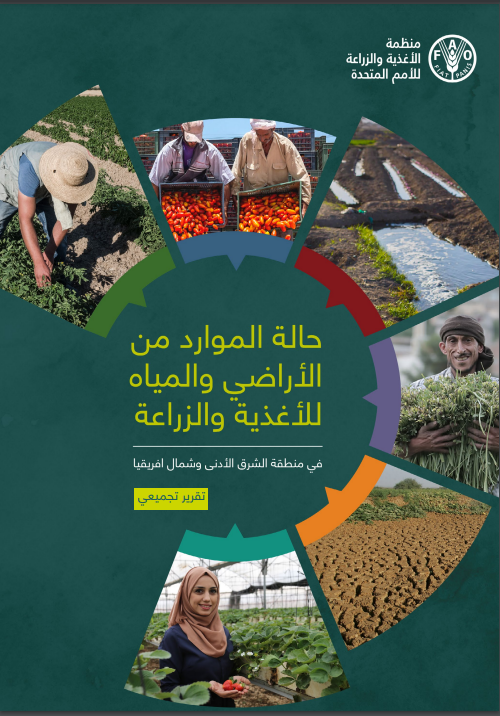FAO’s State of Land and Water Resources Report

The State of Land and Water Resources (SOLAW) in the Near East and North Africa (NENA) region is part of a FAO flagship series of reports launched in 2011. The FAO regional office in Cairo published the latest SOLAW report in 2022, and should be a subject of discussion in the FAO Regional Conference and Regional CSO Consultation in early 2024. This article offers a critical overview of the report with questions to be deliberated toward an alignment with related FAO principles and commitments.
Being one of the most land and water scarce region in the world, the preservation of land and water resources in NENA is crucial to ensure food security and meet the region’s increased food demand. The FAO publication aims at providing policy makers, institutions and other stakeholders a comprehensive overview of the current situation for land and water and the effect of climate change and urbanization on food production facilitating informed decision making. It provides the latest land and water resource statistics from FAO for the region and outlines important challenges that NENA is facing in the lead up to 2030 and beyond. It also presents a range of options available to help authorities respond to the issues of land and water resources based on positive initiatives from the region.
The SOLAW includes some appropriate language on land tenure and land-use rights language, framing weak tenure rights as a major issue of concern across the region. It points out that, many NENA countries still do not have sufficiently robust regulatory frameworks to govern land tenure and land-use rights. However, it makes only passing mention of FAO’s own normative instruments on the subject, notably the Voluntary Guidelines on the Responsible Governance of Tenure of Land, Fisheries and Forests in the Context of National Food Security (VGGT) (pp. 89, 138). It does dedicate a single paragraph to profile the VGGT application in a €3.4 million EU-funded project during 2017–19 in Darfur, Sudan.
Despite the development of norms and standards on the human right to water, the report makes only minor mention of water rights, but takes a “market-based” approach consistent with its earlier and still-controversial advice on agricultural water investments in NENA.
The report dedicated an entire chapter on water resources and water trends the urban-rural interface. It focuses attention on non-farm rural livelihoods, seeming to promote a transition from agriculture consistent with the FAO’s earlier small-scale family farming report. However, the present report makes only minimal mention of family farming, but significant consideration of smallholders, which may be a more-encompassing term to use than “family farming.”
The SOLAW offers an entire section on “Global Agendas of Relevance to Agriculture,” which includes SDGs, Land Degradation Neutrality Paris Agreement, and the Koronivia joint work on agriculture. This treatment encourages needed policy coherence both domestically and across borders.
Importantly, this report encourages better water accounting, including “virtual water,” the water embodied in the production of food and non-food commodities traded. It calls for better and more-transparent water accounting in trading and national water budgets, so that the hidden flow of water in food or other commodities is considered.
The report squarely addresses climate change, population growth, conflicts and “natural disasters” (an unfortunate term).
FAO undercounts five out of 19 NENA countries currently affected by conflict, but notes more than 40 million “international migrants” (p. 32). However, by more-detailed estimates, this number includes almost ten million internally displaced persons. The three paragraphs dedicated to conflicts and crises (p. 39) only begins to scratch the surface of the problems, causes and potential remedies.
The treatment of women in the report is disappointing.The case study offered on the role of women in water user associations is billed as “women’s empowerment,” without the needed grounding in women’s rights. Moreover, rural women’s participation in water-user associations has been evaluated as an exercise in marginalization without certain requisite conditions. The report provides no focus on the importance—yet invisibility—of women workers in the agricultural sector, vital land tenure (access, use and control) rights for women, despite land tenure being a major topic in the report.
With some encouragingly progressive advice for states, this FAO demonstrates again the need for civil society input in such policy guidance.
Image: Front cover of FAO`s SOLAW report. Source: FAO.
|